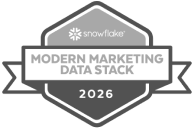What distinguishes a data flow diagram from data lineage?
A data flow diagram (DFD) visually represents how data moves within a system, focusing on the processes that transform data and where it is stored and sent. In contrast, data lineage provides a detailed historical record of data transformations, tracing its journey from origin to final destination, including all changes made along the way. Essentially, a DFD shows the "current" data flow, whereas data lineage tracks the data's "evolution" over time. This distinction is crucial for professionals focused on system design and data governance.
Understanding the differences between DFDs and data lineage is important for effectively managing data systems. DFDs highlight the high-level flow of data through a system, while data lineage focuses on specific transformations and changes data undergoes throughout its lifecycle. DFDs offer a broader view, showing major data flows and processes, while data lineage provides a granular view of data transformations, including data source, calculations, and quality checks. DFDs are used for system design and analysis, whereas data lineage is utilized for data governance, compliance, impact analysis, and troubleshooting data issues.
How do data flow diagrams and data lineage complement each other?
Data flow diagrams and data lineage, while distinct, complement each other by providing a comprehensive view of data management. DFDs offer a snapshot of the data's movement within a system at a given time, useful for identifying inefficiencies or planning system enhancements. Data lineage, in contrast, provides a temporal view, showing how data has moved and changed over time. Together, they form a complete picture that aids in system optimization and compliance.
By using both DFDs and data lineage, organizations can plan system improvements informed by historical insights from data lineage, validate the data flows represented in DFDs, ensuring they reflect the actual data journey, and ensure thorough system documentation and analysis.
What are the practical applications of data lineage in data governance?
Data lineage plays a pivotal role in data governance by offering transparency into the data's lifecycle. It is instrumental in regulatory compliance, risk management, and data quality assurance. By tracking every change and movement of data, organizations can ensure accountability and trace issues back to their source. Practical applications include meeting GDPR requirements, performing impact analyses, and maintaining data integrity. For more insights, explore the use of data intelligence tools in enhancing data governance strategies.
Data lineage aids in meeting regulations such as GDPR by providing a clear trail of data processing activities. It is used to understand the potential effects of changes within the data environment and facilitates tracing errors or inconsistencies back to their origins.
Can data lineage help in optimizing data transformation processes?
Yes, data lineage can significantly aid in optimizing data transformation processes. By providing visibility into the data's journey, it allows teams to identify redundant or inefficient transformations and streamline processes accordingly. This can lead to improved performance and reduced processing times. Moreover, data lineage helps in understanding dependencies and the impact of changes, which is crucial for process optimization.
Data lineage reveals inefficiencies in data transformations, allowing for process refinement. It helps in making informed decisions about process changes and optimization efforts guided by data lineage can lead to better system performance and cost savings.
What challenges do organizations face when implementing data lineage?
Organizations face several challenges when implementing data lineage, including the complexity of data ecosystems, the dynamic nature of data flows, and the need for specialized tools and expertise. Ensuring comprehensive coverage and maintaining up-to-date lineage information can be resource-intensive. Additionally, integrating data lineage into existing workflows and systems often requires significant effort and change management.
Tracking and maintaining accurate data lineage is difficult in complex and dynamic data ecosystems. Effective data lineage solutions require specialized tools and expertise. Integrating data lineage into existing processes can be challenging and may require organizational change.
How does Secoda's automated data lineage improve compliance?
Secoda's automated data lineage significantly enhances compliance in regulated industries by providing comprehensive and transparent tracking of data flows and transformations. This system improves compliance in several ways:
- Enhanced Transparency and Auditability: Automated data lineage offers a clear and detailed map of data's journey through an organization's systems. This transparency is crucial for regulatory compliance, allowing organizations to demonstrate how data is sourced, transformed, and used, as required by regulations such as GDPR, HIPAA, and SOX.
- Efficient Compliance Reporting: By maintaining an up-to-date and accurate record of data lineage, Secoda simplifies the process of generating compliance reports. This reduces the time and effort needed to prepare for audits, as organizations can quickly access historical data flows and demonstrate adherence to regulatory standards.
- Proactive Risk Management: Secoda's integration with tools like Cyera enhances its ability to identify and manage compliance risks in real-time. By providing detailed insights into sensitive data movements, organizations can swiftly address potential compliance violations before they escalate.
- Improved Data Quality: Automated lineage helps in detecting and correcting data quality issues, ensuring that the data used for decision-making is accurate and reliable. This is essential for maintaining compliance with industry regulations that mandate high standards of data integrity.
Overall, Secoda's automated data lineage tools enable organizations in regulated industries to maintain robust compliance frameworks by ensuring transparency, reducing manual errors, and facilitating efficient audit processes.
What are the benefits of using Secoda's data lineage platform?
Unlock the full potential of your data with Secoda's powerful tools for data flow and lineage visualization. Whether you're in healthcare, finance, retail, or any other industry, Secoda offers an automated solution to track and manage your data's journey from source to destination. Here are some benefits:
- Automate Data Lineage: Eliminate manual documentation with Secoda's automated lineage tracking, ensuring you always have a complete and accurate picture of your data's history.
- Visualize Data Flows: Easily understand complex data movements with intuitive diagrams that highlight how data travels through your systems.
- Enhance Data Governance: Improve compliance and data quality with comprehensive insights into data transformations and usage across your organization.
- Facilitate Collaboration: Enable teams to work together seamlessly with centralized data catalogs and collaborative features.
Experience the power of automated data management. Get started today and see how we can transform your approach to data governance and compliance.
How can I get started with Secoda's data lineage platform?
To explore the capabilities of Secoda's data lineage platform, you can visit Secoda's data lineage platform page. Here, you'll find detailed information about how Secoda can help you automate data lineage, visualize data flows, and enhance data governance.
For a hands-on experience, consider scheduling a demo to see how Secoda's solutions can transform your data management processes. Don't miss the opportunity to enhance your organization's compliance and data quality with Secoda's innovative tools.






.jpg)

.png)







